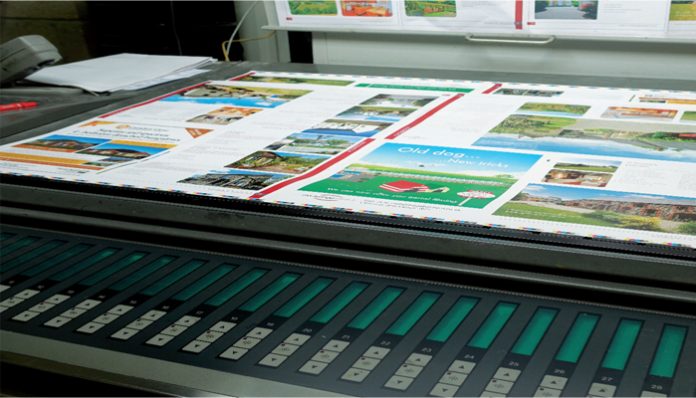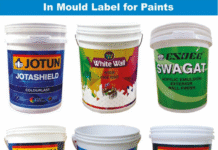The Indian printers are ebullient right now although they do keep crying about poor printing rates and thinner margins. Rightly or wrongly they are first of all (like many business constituencies) adamant in their support of the prime minister notwithstanding the lack of reforms so far. And they remain optimistic that acche din (good times) for the economy will come in spite of steep fall in exports over the past two years and the continued revelations of non-performing assets by the banks.
In the past financial year, Indian print businesses created unprecedented capacity with the purchase of high configuration printing presses of all kinds – offset, gravure, flexo, narrow web and digital. The capacity increases in board and packaging film manufacture are also commensurate. As we go to drupa 2016, the Indian printers are amongst the most keen to evaluate and invest.
So why are we talking about used machinery? Because it is a fact of life and a useful one at that. Approximately 80 to 90 brand new multicolor offset presses were imported and installed in India from 1 April 2015 to 31 March 2016. At a guess, about 2,000 used offset presses were also imported – a ratio of 24 to 1. However if one filters these 2000 by just looking at 4-color and plus machines, of 74 cm and larger sizes with some automation features, and which are less than ten years old, the number comes down to perhaps 340 presses. (Source: IppStar Research www.ippstar.org).
Price is important but so is the cost of ownership
Price is important in a country with double-digit interest rates for investment and double-digit customs duties and the absence of reliable power supplies. The price of a new multicolor press compared to a good used press is approximately double without EPCG (Export Credit) duty waivers. If the EPCG scheme is used for waiving duty on a new press, its price is approximately 1.5 times that of a good used press with automation features. With a new press you get trouble free installation and warranty while with a used press you have to set aside a budget for inspection, evaluation, possible refurbishing, spare parts, installation and servicing. The only perceived benefit is that you can break the law to capitalize your untaxed money and further extend it again by breaking another law for under-invoicing the import.
In a vibrant economy, one of the established business models for entry and fast growth are used press and equipment purchases and this cannot be faulted or criticized if it is done with a proper techno-economic analysis and within the law. (By the way, very few buyers of multicolor high configuration offset presses can do this proper technical analysis and there are few honest consultants who can help them.) However some of the leading printers are extremely knowledgeable and they take the trouble to find out the benefits of automation features versus their desirability in the Indian market and take astute decisions. At times they experiment and gamble as well, but they are in the fortunate position of having businesses that can survive both poor economic scenarios and the occasional mistake. They also have the human resources to make innovative ideas work.
Audit and inspection by company engineer
Thus since many of us still require used presses and the majority of capital expenditure for printing equipment imports is for used equipment, it’s important to again outline some precautionary guidelines for buying these. An industry expert tells us, in order to choose a suitable press, you must ascertain the substrate or material range to be printed, the number of colors needed (beyond C,M,Y,K) and the necessary value adding equipment such as coaters, foilers, curing systems required on the machine. One must try for, or approximately guess the closest possible configuration and then shortlist at least two press manufacturers for making a decision. On finding a press close to your needs, get in touch with the manufacturer’s local office to cross check the authenticity of its reported configuration, its history and its health report based on past usage, maintenance and breakdowns. Only buy presses than can be seen and tested while running.
Packaging South Asia is the cooperating media partner for drupa 2016 which is scheduled to be held from 31 May to 10 June at Dusseldorf, Germany.
A press audit and inspection can be done at a nominal cost by the original manufacturers’ trained engineer. As a significant market, the offset press manufacturers and their subsidiaries and distributors in India keep inventories of spares and have factory trained engineers. They are familiar with erratic and poorly thought out imports of equipment by ambitious dealers and printers. These wrong purchases are then subsequently made usable or optimized by them at great cost to themselves often in the forlorn hope of winning some customer loyalty.
It’s important to confidentially take the manufacturer’s local office on board, as it may subsequently be responsible for the equipment’s upkeep and day-to-day running. Most of the manufacturers are willing to dig out and share relevant information. Buyers often fall for a low investment press not realizing that all presses are different from each other (almost every press out of the factory is unique and made to order) and making a used press operational in India could entail a level of expense and effort that defeats the very purpose of getting a good deal in the first place.
We have talked to most of the major press manufacturers although some are reluctant to speak about used presses at drupa time – a time when they are hopeful of snagging some good orders based on the automation and new features on show. Nevertheless, all the manufacturers support buyers of good condition used presses in India with spares and engineering.
Heidelberg India managing director Klaus Nielsen says, “We have been supporting Heidelberg customers for over ten years even if they bring in used machines themselves or through a dealer. Of course if they want to purchase a good condition and not too old multicolor press through us, we will not only source it but we will send one of our experienced engineers to evaluate it, no matter where it is in the world. This will also be the engineer who is most likely to install it and we will offer the full extent of our service offerings in India including training to the customer. An extended service offering can also be part of the package.”
Sangam Khanna of Komori’s Indian distributor Insight Communications says, “We are happy to support customers as long as they do not ask for under-invoicing. Although we think it makes much better sense to buy a new press in terms of cost of ownership and we can prove this in black and white, we can help in finding presses as well as provide spares and engineering.”
 RMGT’s Indian distributor Provin Technos is also ready to help. RMGT principal Vinay Kaushal says, “As long as the machine is less than ten years old, we can help with identification and inspection of the machine. We have our own refurbishing plant in Okhla for presses up to 36 inches and we can refurbish bigger presses at the printer’s premises.” Kaushal is very keen that a factory-trained engineer inspect the machine. “We can send our engineer to Japan for inspecting two or three machines in three days depending on the logistics for an indicative price of about Rs. 2 lakh (US$ 3,000) including travel,” he says. He also laments the fact that many printers do not even want to spend this much for an inspection that could reveal many hidden flaws or potential problems.
RMGT’s Indian distributor Provin Technos is also ready to help. RMGT principal Vinay Kaushal says, “As long as the machine is less than ten years old, we can help with identification and inspection of the machine. We have our own refurbishing plant in Okhla for presses up to 36 inches and we can refurbish bigger presses at the printer’s premises.” Kaushal is very keen that a factory-trained engineer inspect the machine. “We can send our engineer to Japan for inspecting two or three machines in three days depending on the logistics for an indicative price of about Rs. 2 lakh (US$ 3,000) including travel,” he says. He also laments the fact that many printers do not even want to spend this much for an inspection that could reveal many hidden flaws or potential problems.
An investment and not an expense
Manroland Sheetfed India is also extremely supportive of its long-standing and potential customers. Since its re-launch in India about 20 months ago it has been actively providing information on used presses to interested buyers as well engineering services. This has already rescued several presses that were under-performing and is very much in line with the upgrade and optimization philosophy of the company under its new management.











